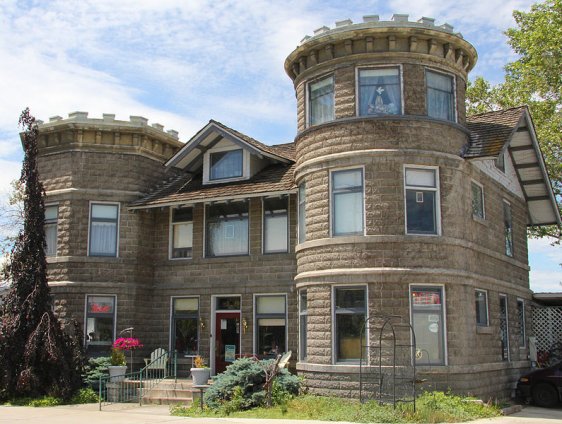Yakima is the eighth largest city in Washington. The county seat of Yakima County, it covers 20.6 sq mi (53.4 sq km) and has a population of 91,000 people (2012 estimate). The city is in the Yakima Valley, 1,066 ft (325 m) above sea level. It is the regional center for one of the best apple-producing regions of the world.
 Carbonneau Mansion, Washington
Carbonneau Mansion, WashingtonSource: https://commons.wikimedia.org/wiki/File:Carbonneau_mansion_2011.jpg
Author: Larry D. Moore

Yakima experiences a steppe climate with Mediterranean precipitation pattern. Summers are warm and dry while winters are cold and wet. July is the warmest month, when average high temperature rises to 87.2°F (30.7°C). January is the coldest month, when the average low temperature drops to 20.5°F (-6.4°C). Precipitation is quite low on the whole, totalling just 8.26 in (210 mm) for the whole year. Snow can be expected in December and January.
The Yakima people are the inhabitants of the area until the arrival of the first Europeans, namely the Lewis and Clark Expedition in 1805. A Catholic Mission was established in nearby Ahtanum in 1847. Yakima County was established in 1865. The Northern Pacific Railroad was constructed in 1884. It caused the original town of Yakima to be relocated so as to be near the railway depot. It was called North Yakima for a while, before reverting to Yakima in 1918. The original site of Yakima is now known as Union Gap.
Visiting Yakima
Yakima is served by Interstate 82, off Exits 31, 33, 34 and 36.Places of Interest in Yakima
- Yakima Area Arboretum
A 46-acre arboretum and botanical garden with some 1,000 species of native and exotic woody plants. - Yakima SunDome
Multipurpose arena that seats 6,195 in Yakima. - Yakima Valley Museum
Museum on the history, geology and culture of the Yakima Valley.
 Latest updates on Penang Travel Tips
Latest updates on Penang Travel Tips

Copyright © 2003-2025 Timothy Tye. All Rights Reserved.

 Go Back
Go Back